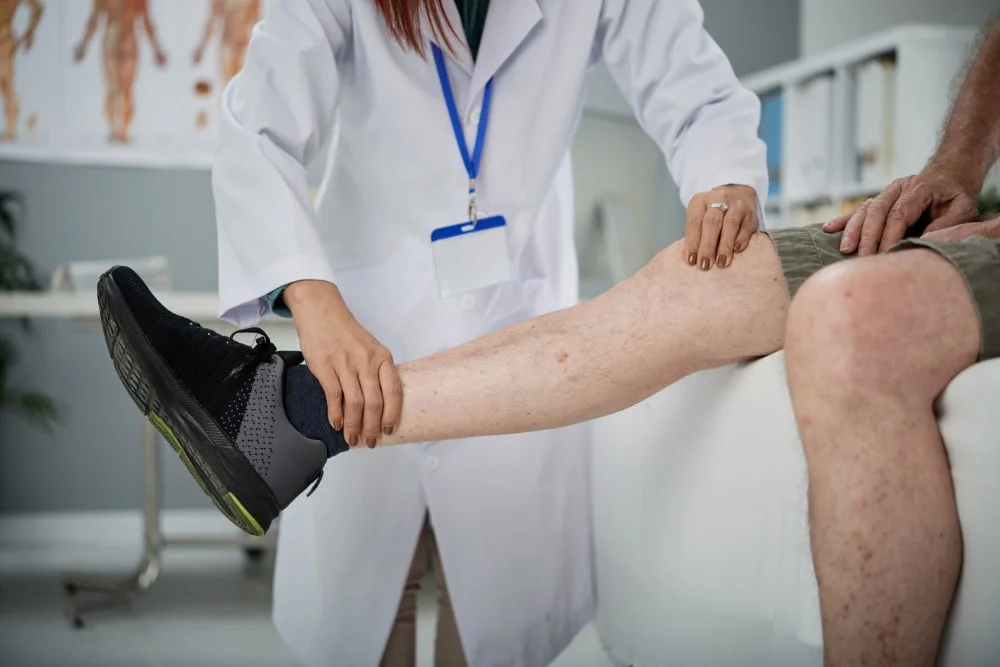Deep Vein Thrombosis (DVT), commonly known as "blood clot formation in the veins," can also be described as the blockage of major veins in any part of the body due to a clot. Although this condition is generally seen in individuals over the age of forty, it can occasionally occur in younger individuals as well.
Deep Vein Thrombosis most commonly develops in the hip, thigh, or legs.
What is Deep Vein Thrombosis?
Deep Vein Thrombosis (DVT) refers to the formation of blood clots in deep veins anywhere in the body. These clots typically occur in the lower leg or thigh region, but they can also develop in other parts of the body.
How is Deep Vein Thrombosis Diagnosed?
The symptoms of Deep Vein Thrombosis vary, and it is crucial to consult a doctor when experiencing any of them. The diagnosis of Deep Vein Thrombosis is made by a specialist physician through medical history assessment (anamnesis), physical examination, and evaluation of test results.
What Are the Symptoms of Deep Vein Thrombosis?
The symptoms of Deep Vein Thrombosis include:
- Severe tenderness and pain in the legs
- Changes in skin color or redness in the legs
- Stiffness in the legs
- Noticeable swelling along the legs or any other affected vein
- Increased warmth in the swollen or painful areas of the legs
What Causes Deep Vein Thrombosis?
Risk factors for Deep Vein Thrombosis include:
- Recent cancer treatment
- Hereditary clotting disorders
- Use of birth control pills (contraceptives) or hormone therapy
- Being obese or overweight
- Prolonged dehydration due to conditions like diarrhea
- Pregnancy or childbirth
- Sedentary lifestyle: Deep Vein Thrombosis is more common in bedridden patients and individuals who frequently undertake long journeys.
What Should Deep Vein Thrombosis Patients Pay Attention To?
Patients with Deep Vein Thrombosis may initially experience difficulty in moving. However, they should gradually return to normal activities. When swelling or pain occurs in the legs, the heels should be elevated approximately 20 centimeters while lying on the back. This helps improve circulation and reduce swelling. Additionally:
- Some Deep Vein Thrombosis patients may require hospital treatment, while others can be treated on an outpatient basis.
- If patients must remain immobile for long periods, they should engage in exercises to activate the calf muscles.
- Activities that pose a risk of serious injury should be avoided.
- Compression stockings should be worn as prescribed by a doctor.
- Patients should stand up and walk for a few minutes every hour.
- Tight clothing that restricts circulation in the legs should be avoided.
Treating Deep Vein Thrombosis Reduces Risks
In the affected area, usually in the legs, common symptoms of Deep Vein Thrombosis include sudden swelling, increased warmth, bruising, pain, and tenderness. If the clot travels to the lungs, it can cause sudden shortness of breath, coughing, chest pain, and palpitations.
The most effective, easy, and painless method for diagnosing Deep Vein Thrombosis after clinical evaluation is color Doppler ultrasonography. If left untreated, Deep Vein Thrombosis can lead to a lifelong progressive condition known as post-thrombotic syndrome. This condition can cause pain, cramps, swelling, burning, itching, a feeling of fullness in the legs, ulcer formation, and varicose veins.
Traditional treatment methods for Deep Vein Thrombosis include the use of blood-thinning medications. However, if diagnosed early—especially when the clot is located in the groin or pelvic veins—advanced treatment methods such as catheter-directed thrombolytic therapy and pharmacomechanical thrombolytic therapy can be preferred to provide rapid relief for the patient. These methods help break down and dissolve the clots effectively.
Op. Dr. Tolga ÖNDER
Cardiovascular Surgery


